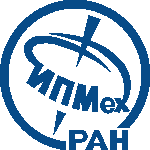
|
ИСТИНА |
Войти в систему Регистрация |
ИПМех РАН |
||
Effect of Hydrodynamic Conditions in an Impinging-Jet Microreactor on the Formation of Nanoparticles Based on Complex Oxidesстатья Исследовательская статья
Статья опубликована в журнале из списка Web of Science и/или Scopus
Дата последнего поиска статьи во внешних источниках: 7 мая 2025 г.
- Авторы: Abiev R.Sh, Proskurina O.V., Enikeeva M.O., Gusarov V.V.
- Журнал: Theoretical Foundations of Chemical Engineering
- Том: 55
- Номер: 1
- Год издания: 2021
- Издательство: Maik Nauka/Interperiodica Publishing
- Местоположение издательства: Russian Federation
- Первая страница: 12
- Последняя страница: 29
- DOI: 10.1134/s0040579521010012
- Аннотация: The effect of the hydrodynamic situation (mainly conditions of mixing of the solutions of the reagents) on the composition and sizes of the nanoparticles being formed in an impinging-jet microreactor (IJMR) upon the impinging of the jets of the reagents—aqueous solutions of lanthanum nitrate and ammonium dihydrogen phosphate—is studied. Unique conditions are generated in the IJMR providing a short-term contact of the jets of the solutions that move at a high velocity (of about 10–20 m/s). The characteristics of turbulence in the IJMR are calculated. It is shown that the rate of dissipation of turbulent kinetic energy in the zone of impinging of the jets may reach 107–109 W/kg, which is comparable to the level of dissipation of energy in ultrasonic baths and is several orders of magnitude higher when compared to almost any other type of reactor. The effect of the region that has a size of the minimum Kolmogorov turbulence scale, i.e., a self-organizing “nanoreactor,” on the size of the particles being formed upon the deposition of particles with a complex composition is determined. Comparing the results of the calculation with the experimental data shows that, in some cases, the volume of the nanoreactor, taking into account the concentration of the solutions, determines the weight and size of the particles being formed. An explanation for the effect of a different influence of the velocity of impingement of the jets on the size of the nanoparticles being formed during the microreactor mixing of the reagents, depending on the characteristic features of the mechanisms of chemical reactions under the conditions of “soft” chemistry, is provided.
- Добавил в систему: Еникеева Мария Олеговна